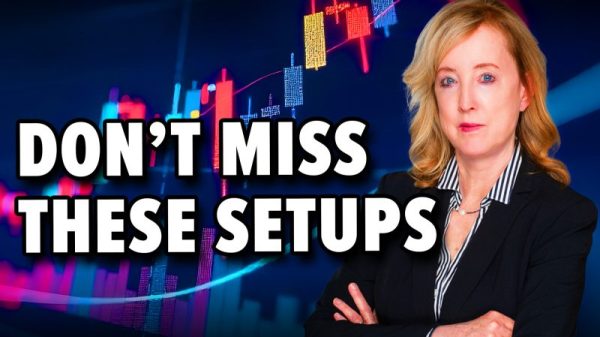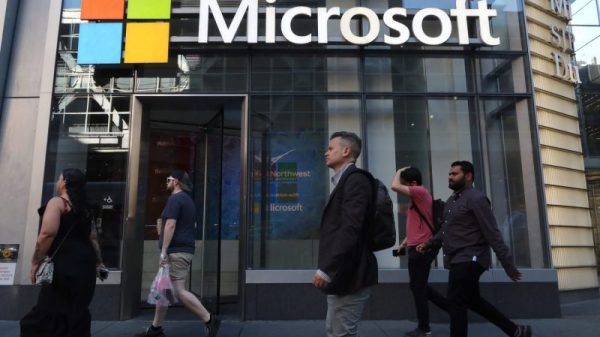Three years ago, the U.S. economy went through an unprecedented upheaval as millions of workers left low-paying jobs for more promising ones. At the same time, many white-collar workers cemented themselves into remote, or at least hybrid, positions that gave them more flexibility.
It was called the ‘great resignation.’
Fast-forward to today, and the situation looks like a mirror image, economists say. Specifically, on average, few workers are leaving their jobs, though they still do not face the prospect of imminent layoffs.
At the same time, the rate of hiring has dropped significantly. Some economists have begun calling it the ‘great stay.’
On Friday, the Bureau of Labor Statistics reported that the U.S. economy added 275,000 jobs in February, up from a revised 229,000 in January and above the 198,000 expected by economists.
The solid job growth data, combined with an unemployment rate that, at 3.9%, is usually a sign of a healthy labor market, is colliding with other, more worrisome trends.
“We’re seeing that the job market is getting cooler,” said Guy Berger, director of economic research at the Burning Glass Institute, a labor research group. “It’s still not a bad one, but it’s looking more like what we saw in the mid 2010s — which was not a terrible job market but still a worse one than what we saw later that decade or what we had in the post-pandemic period.”
The labor market faces an unusual set of crosscurrents that makes it hard to predict whether the economy can maintain its strength in the medium term and beyond, said Mark Zandi, chief economist at Moody’s Analytics.
In addition to quits being down, he noted that hours worked have, in some instances, been cut back to recessionary levels. On Thursday, the agency reported a 3.3% decrease in hours worked for manufacturing — the largest such decline since the historic drop-off in the second quarter of 2020.
Cuts among temporary jobs have also picked up, Zandi said, which can often signal that cuts to full-time positions are in the offing.
‘It feels fragile,’ he said.
At the same time — and despite some high-profile headlines reflecting thousands of roles eliminated over the past year — actual layoff rates remain below pre-pandemic levels.
Yet here, too, there are worsening signs. The job placement firm Challenger, Gray & Christmas on Thursday reported the highest level of layoff announcements for any February since the global financial crisis.
“As we navigate the start of 2024, we’re witnessing a persistent wave of layoffs,” Andrew Challenger, the firm’s labor and workplace expert, said in a statement. “Businesses are aggressively slashing costs and embracing technological innovations, actions that are significantly reshaping staffing needs.”
Zandi noted that firms’ profit margins are starting to decline amid higher interest-rate costs, which could put further pressure on their payrolls.
In general, he said, ‘the market just feels like it’s all over the place.’
Unfortunately, if you’re looking for a job, it appears to be taking longer to find a new one. Bureau of Labor Statistics data shows the number of people experiencing unemployment for 15 to 26 weeks has climbed 53% since it hit a low in March 2022.
“If someone needs to find a new job or wants to find a better job, the opportunities right now are more limited, aside from a few fairly narrow sectors,” Berger said.
The industries doing the most hiring include health care and social services, which are expanding thanks to the aging population, and government services, whose offers of lower salaries, on average, are increasingly seen as competitive given the relative lack of other new opportunities elsewhere in the private sector, Berger said.
Given the still low rate of layoffs in the broader economy, Berger is optimistic that the ‘great stay’ can be sustained. An example of a firm holding its headcount steady is Amazon, which has trimmed payrolls from post-pandemic highs, but which remain significantly above pre-pandemic levels.
“We are investing, and we are adding in some areas,” Brian Olsavsky, Amazon’s chief financial officer, said on a conference call with reporters following the company’s quarterly results. “But there’s a general feeling in most teams that we’re looking to hold the line on headcount, perhaps go down as we can drive efficiencies.”
There remains reason for some optimism. Job openings remain well above pre-pandemic levels. In a follow-up interview, Andrew Challenger pointed out that the U.S. has had three consecutive months of net new job growth, including a 12-month high of 353,000 jobs added in January. The January number was revised downward to 229,000.
‘It’s still a very good labor market,’ he said. ‘There are certainly companies that want to keep people; people are staying. But there’s also increased layoff activity. They don’t have to be correlated — sometimes it’s just volatility.’
Yet, in February, employers announced plans to hire just 10,317 workers, for a total of 15,693 so far in 2024, the lowest year-to-date total for announced hiring plans since Challenger, Gray & Christmas began its tracking in 2009, the company found.
The broader picture remains an unusual one, Berger said.
‘There are relatively few new people coming in, but relatively few people are leaving,’ he said. ‘It’s a weird environment.’





























